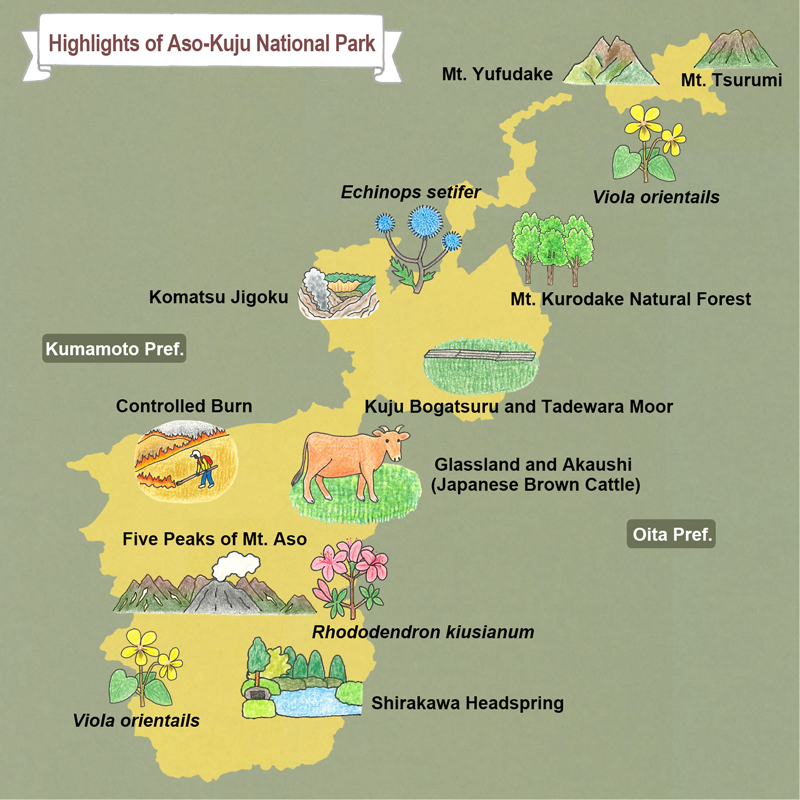- MOE
- National Parks of Japan
- Aso-Kuju National Park
- Guide of Highlights
main body
Highlights of Aso-Kuju National Park
Mt. Tsurumi
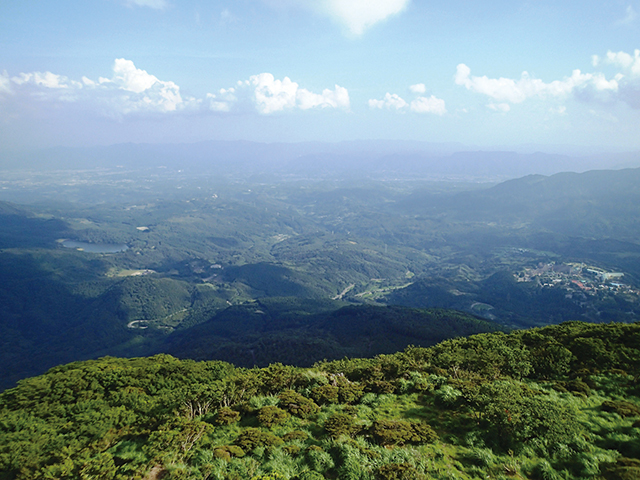
Mt. Tsurumi
You can access the summit via cable car and enjoy a beautiful view of Beppu Bay. You can also enjoy seasonal blessings, including Kyushu Azalea in spring, green forests in summer, colored leaves in autumn, and frost-covered trees in winter.
Mt. Yufudake
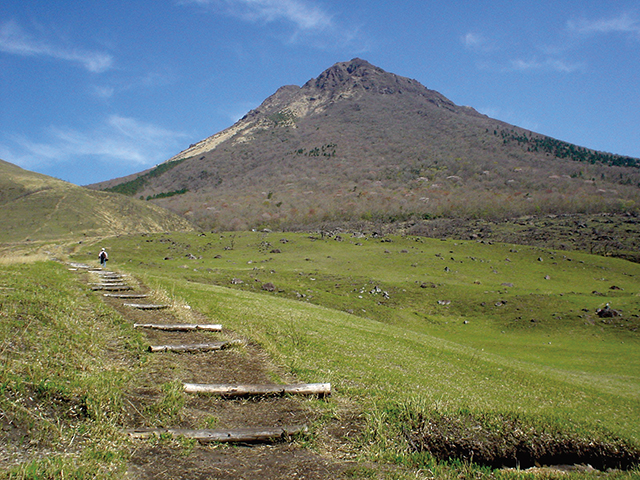
Mt. Yufudake
Also called 'Bungo Fuji' (Mount Fuji of Oita) because of its graceful shape. The scenery includes vast grasslands maintained by controlled burning at the foot of the mountain, as well as colored leaves on the hillside in autumn.
Beppu-Ichinomiya Route (Yamanami Highway) Milk Road

Beppu-Ichinomiya Route (Yamanami Highway) Milk Road
The Yamanami Highway that connects the Aso and Kuju areas, and the Milk Road that runs across Kita-Gairin caldera in the Aso-region are representative roads of Aso Kuju National Park and both offer views of vast grasslands and the Kuju Mountain Range and the five peaks of Mt. Aso that stretch out in the distance.
Kuju Bogatsuru and Tadewara Marsh

Kuju Bogatsuru and Tadewara Marsh
Intermediate marsh formed from the springs at the foot of Mt. Kujusan reflect the diverse topology and geology, with a wide range of plant and animal life. The intermediate moors formed in the mountains cover the greatest area in Japan, and are registered in the Ramsar Site.
Mt. Hijidake
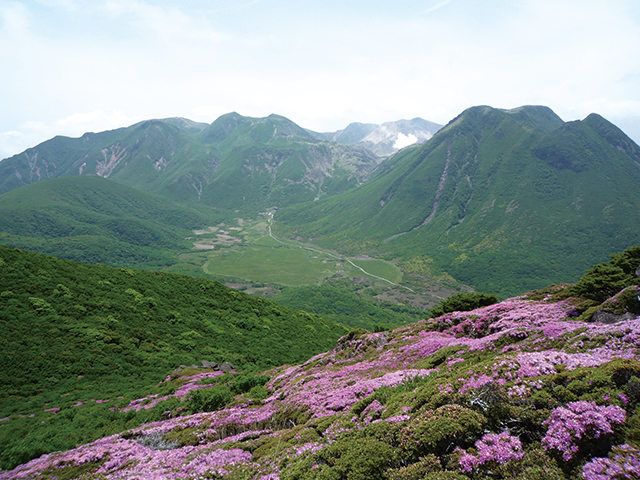
Mt. Hijidake
This mountain is popular among mountain climbers. A profusion of Kyushu Azalea surrounds the summit, which offers a view of Bogatsuru Marsh, a registered wetland under the Ramsar Convention
Komatsu Jigoku
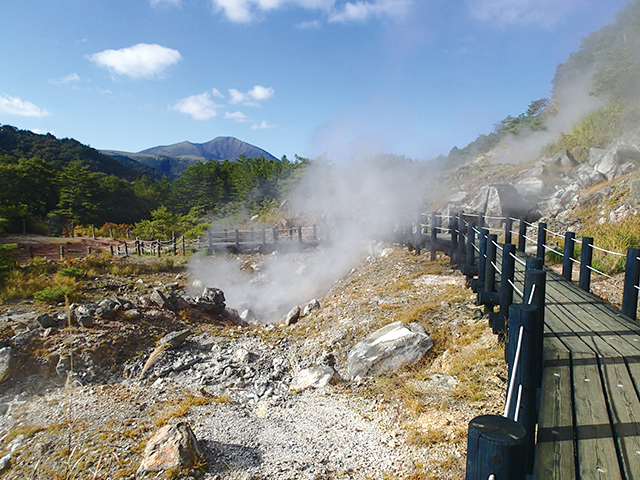
Komatsu Jigoku
This is a natural geothermal area where boiling water, steam, and mud emerge from the land. There is a walking path where you can enjoy the unique landscape while experiencing the energy of the nearby volcano.
Mt. Kurodake natural forest
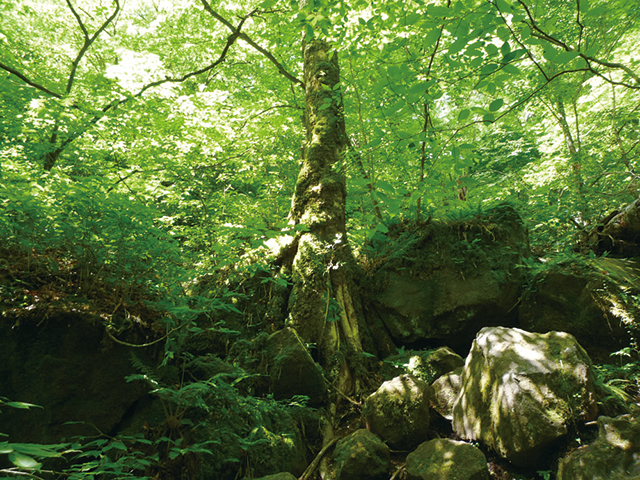
Mt. Kurodake natural forest
Mt. Kurodake is covered with natural forest up to the summit, featuring many Japanese beech and Japanese elm trees. Water sources such as Oike Pond, Shiramizu Spring, and Kakushimizu, located at the trailhead, are well-known for their exquisite and well-conserved water.
Kuju Plateau
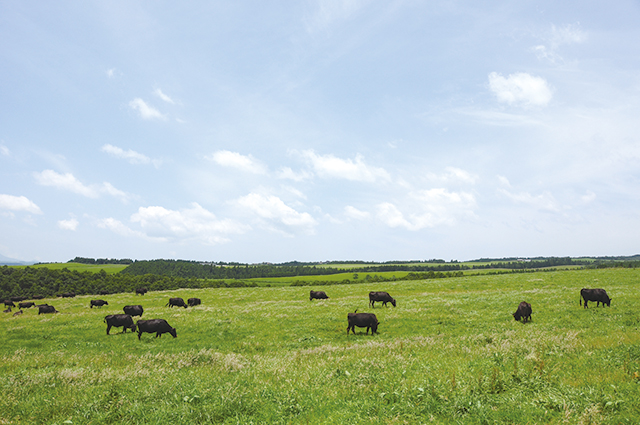
Kuju Plateau
The vast and gentle plateau was formed by pyroclastic sediment, creating a peaceful landscape with grazing fields. Controlled burning is conducted in spring to maintain the ecosystem.
Kikuchi Gorge
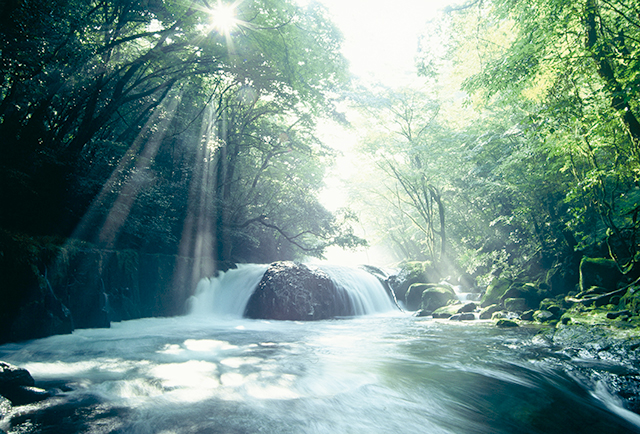
(Photo provided by: Kikuchi City)
Kikuchi Gorge
The beautiful valley is located in the northwest of the caldera and has various big and small streams and waterfalls. The water temperature is low even in summer, and the cool environment attracts a lot of visitors.
Daikanbo
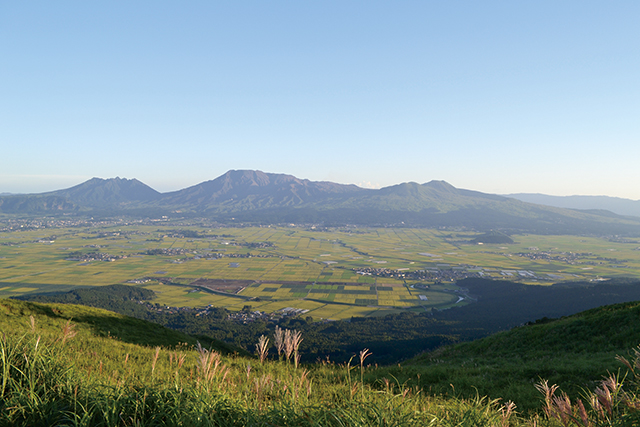
Daikanbo
This peak is a fantastic lookout point that offers a stunning view of the five peaks of Mt. Aso. This famous view is known as the 'Reclining Buddha of Aso'. You can as well enjoy the surrounding vast grasslands and the northern side of the Aso caldera below. A parking lot is available, from which you can reach the lookout spot in about 10 minutes on foot.
Five Peaks of Mt. Aso

Five Peaks of Mt. Aso
Refers to Mt. Takadake, Mt. Nakadake, Mt. Nekodake, Mt. Kijima, and Mt. Eboshi. The five peaks resemble the Buddha asleep face-up, and therefore, collectively referred to as "Reclining Buddha." Mt. Nakadake is an active volcano.
Komezuka

Komezuka
Shaped most recently among the Aso volcanoes (about 3,000 years ago), this volcano has a beautiful cone shape resembling an inverted bowl. The volcano stands approximately 80 meters high and features a vestige of a crater at its summit. (Access to the summit is restricted due to vegetation preservation.)
Mt. Nakadake central crater

Mt. Nakadake central crater
This active volcano is rare worldwide in that visitors can peer into its crater. You can approach the crater on foot or by car. (Upon visiting, please check the 'Information on restrictions for Aso Volcano Crater.')
Kusasenrigahama

Kusasenrigahama
This is a double crater, with a smaller crater approximately 400 meters in diameter formed within a larger crater approximately 1 kilometer in diameter. The area features two ponds and grasslands, offering visitors an opportunity to relax amidst the idyllic scenery.
Shirakawa Water Source

Shirakawa Water Source
This is one of the water sources of the Shirakawa River, a first-class river in Kumamoto
City. Representing the cluster of springs in Minamiaso district, this headspring generates 60 tons of water a minute. It was designated as one of the best hundred waters of Japan selected by the Ministry of the Environment.
Wildlife & Plants
Viola orientalis

Viola orientalis
A yellow carpet is laid on the blackened remains after the grasslands have been burnt off. Blooming in April and May throughout the grasslands of the Aso region.
Rhododendron kiusianum

Rhododendron kiusianum
A member of the Azalea family. Found on bare volcanic mountainsides in Kyushu. The mountains are covered in pink when the flowers bloom in May and June. In the Kuju Mountain Range, this species is being overwhelmed by other species, and are dying out. Protective measures are underway.
Echinops setifer

Echinops setifer
A rare plant that still remains. Spread from the continent in the Ice Age. The spherical flowers bloom in azure blue in August and September. Leaves resemble those of the thistle, and have prickles. Found on grasslands. Susceptible to extinction as grasslands disappear.
Akaushi (Japanese Brown Cattle)
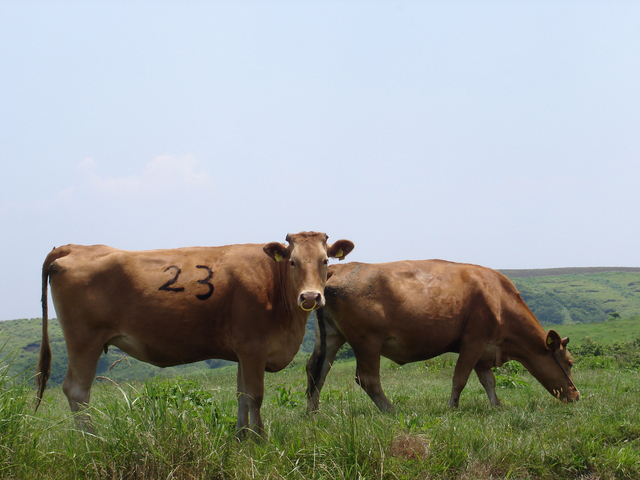
Akaushi (Japanese Brown Cattle)
A brown cow representative of Aso. Used in agricultural work, and raised by farming households in Aso for hundreds of years. Popular as beef today. Japanese Brown Cattle are put out to pasture, providing an idyllic scene as they eat their way through the grasslands.
